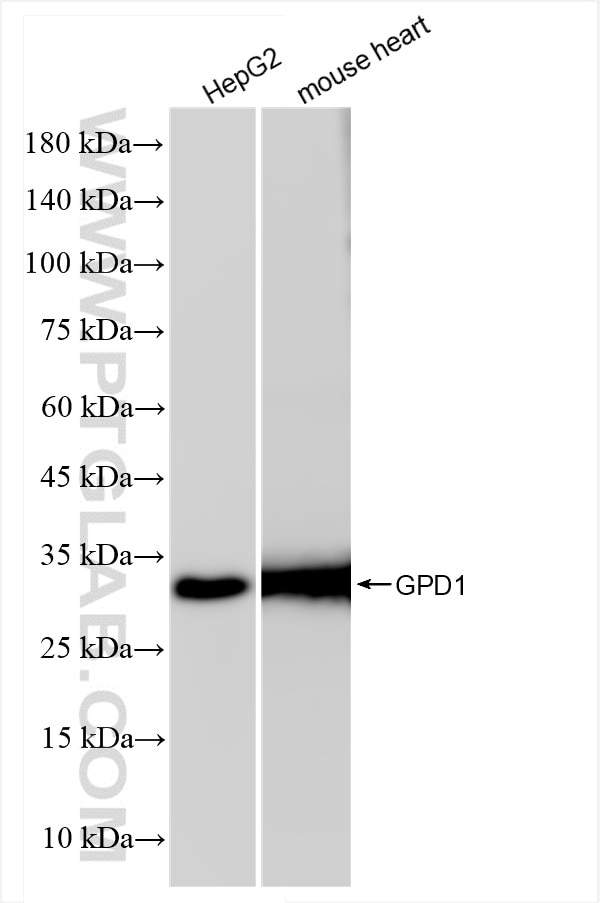Product Information
84800-4-PBS targets GPD1 in WB, Indirect ELISA applications and shows reactivity with human, mouse samples.
| Tested Reactivity | human, mouse |
| Host / Isotype | Rabbit / IgG |
| Class | Recombinant |
| Type | Antibody |
| Immunogen | GPD1 fusion protein Ag4278 Predict reactive species |
| Full Name | glycerol-3-phosphate dehydrogenase 1 (soluble) |
| Calculated Molecular Weight | 349 aa, 38 kDa |
| Observed Molecular Weight | 32 kDa |
| GenBank Accession Number | BC032234 |
| Gene Symbol | GPD1 |
| Gene ID (NCBI) | 2819 |
| Conjugate | Unconjugated |
| Form | Liquid |
| Purification Method | Protein A purfication |
| UNIPROT ID | P21695 |
| Storage Buffer | PBS only , pH 7.3 |
| Storage Conditions | Store at -80°C. |
Background Information
GPD1 (Glycerol-3-phosphate dehydrogenase 1) is an important enzyme belonging to the NAD-dependent glycerol-3-phosphate dehydrogenase family. Its C-terminal structural domain contains multiple helical structures for binding the substrate DHAP, and its N-terminal structural domain contains a β-folded core for binding NADH. GPD1 catalyzes the conversion of dihydroxyacetone phosphate (DHAP) and reduced nicotinamide adenine dinucleotide (NADH) to glycerol-3-phosphate (G3P) and NAD+, and plays a key role in carbohydrate and lipid metabolism. GPD1 also works with mitochondrial glycerol-3-phosphate dehydrogenase to form a glycerophosphate shuttle system that facilitates the transfer of reducing equivalents from the cytoplasm to the mitochondria. Abnormal activity of GPD1 has been associated with a variety of metabolic disorders, such as obesity, hypertriglyceridemia, and GPD1 has been implicated in cancer, potentially acting as a tumor suppressor.



